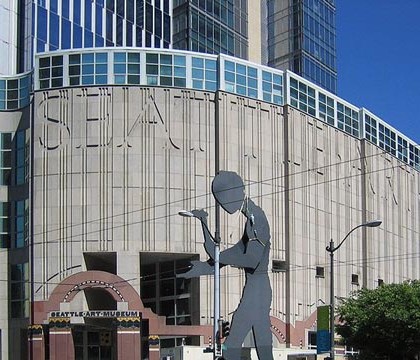Seattle, Wash.
The Seattle Art Museum had its roots in 1906 with the formation of the Seattle Fine Arts Society. In 1931, Dr. Richard E. Fuller donated funds and much of his own art collection, then commissioned an architect – another member of the society – to build an art deco museum.
Seattle’s second museum was conceived because of another major donation of artwork – this one in 1981 from the Katherine C. White collection, partially funded by the Boeing Company. That donation encouraged the appropriation of public funds to build a new 150,000-square-foot facility in downtown Seattle designed by Pritzker Prize-winning architect Robert Venturi. Upon its opening in 1991, the original art deco Seattle Art Museum was renovated and reopened in 1994 as the Seattle Asian Art Museum.
Seattle’s second museum – the downtown facility for which Bybee provided limestone – bears monumental letters high on its façade. According to Jerry Barkshire of Barkshire Panel Systems, 24,500 square feet of Indiana limestone was specified for the new museum – most for the curtain wall, which includes those monumental letters. Other materials – sandstone and 375 pieces of terra cotta – were used in articulating the archways over monumental glass windows and on capital definition. Granite was used for columns, and marble and limestone both were used on the interior of the museum.
